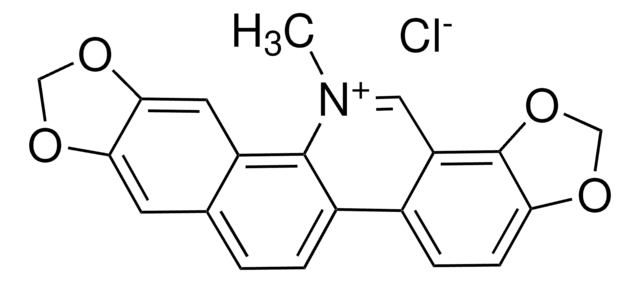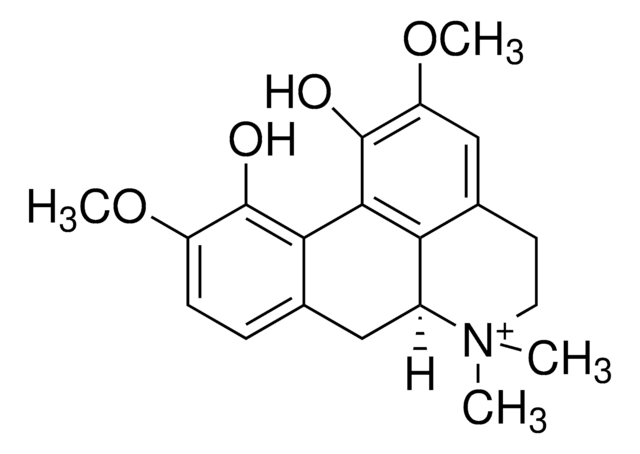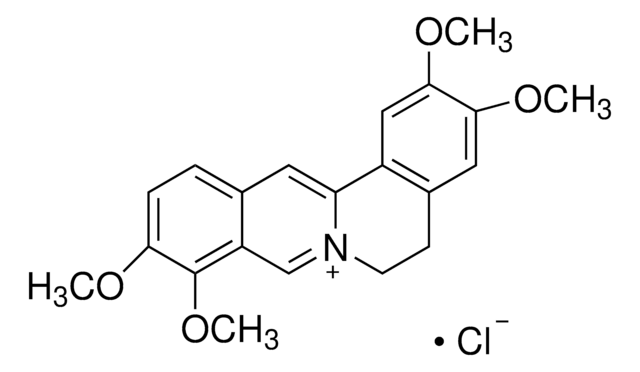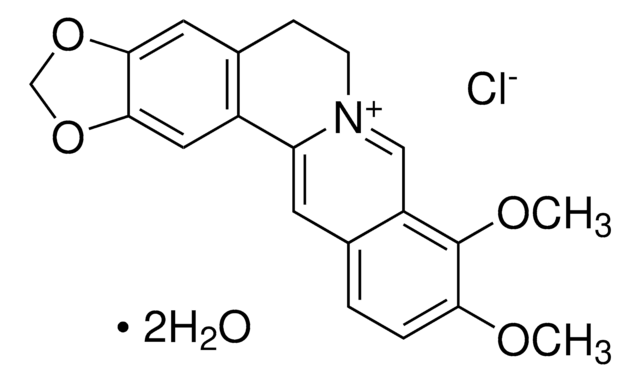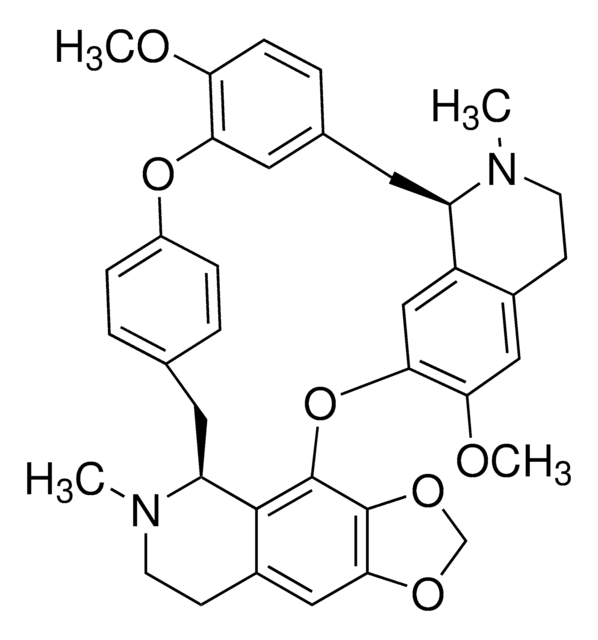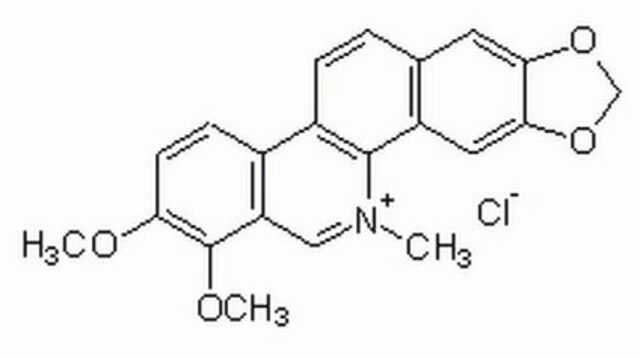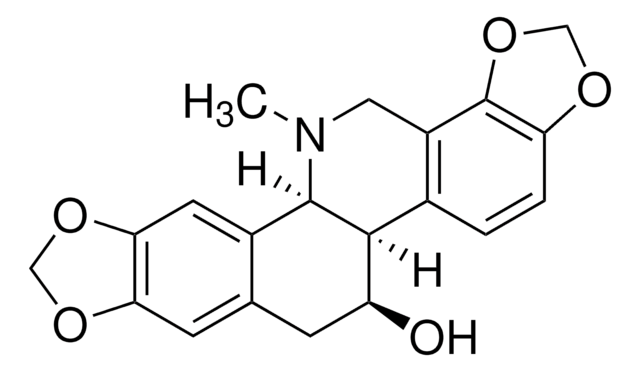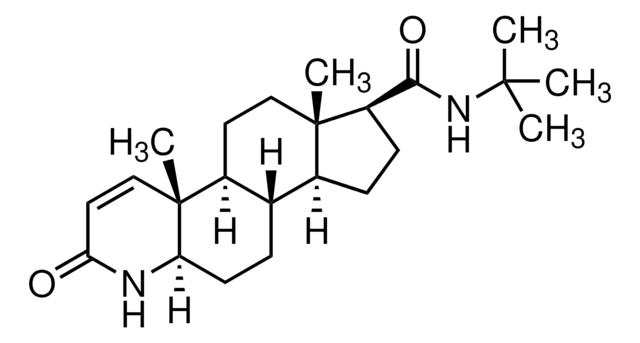Kluczowe dokumenty
SMB00314
Coptisine Chloride
≥98% (HPLC)
Synonim(y):
Coptisine chloride, Bis(methylenedioxy)protoberberine chloride, Coptisin Chloride
About This Item
Polecane produkty
Poziom jakości
Próba
≥98% (HPLC)
Formularz
powder
Zastosowanie
metabolomics
vitamins, nutraceuticals, and natural products
temp. przechowywania
−20°C
ciąg SMILES
C1(OCO2)=C2C=C(CC[N+]3=C4C=C5C(C(OCO6)=C6C=C5)=C3)C4=C1.[Cl-]
InChI
1S/C19H14NO4.ClH/c1-2-16-19(24-10-21-16)14-8-20-4-3-12-6-17-18(23-9-22-17)7-13(12)15(20)5-11(1)14;/h1-2,5-8H,3-4,9-10H2;1H/q+1;/p-1
Klucz InChI
LUXPUVKJHVUJAV-UHFFFAOYSA-M
Powiązane kategorie
Opis ogólny
Zastosowanie
Działania biochem./fizjol.
Hasło ostrzegawcze
Danger
Zwroty wskazujące rodzaj zagrożenia
Zwroty wskazujące środki ostrożności
Klasyfikacja zagrożeń
Acute Tox. 2 Inhalation - Acute Tox. 2 Oral
Kod klasy składowania
6.1A - Combustible acute toxic Cat. 1 and 2 / very toxic hazardous materials
Klasa zagrożenia wodnego (WGK)
WGK 3
Temperatura zapłonu (°F)
Not applicable
Temperatura zapłonu (°C)
Not applicable
Wybierz jedną z najnowszych wersji:
Masz już ten produkt?
Dokumenty związane z niedawno zakupionymi produktami zostały zamieszczone w Bibliotece dokumentów.
Klienci oglądali również te produkty
Nasz zespół naukowców ma doświadczenie we wszystkich obszarach badań, w tym w naukach przyrodniczych, materiałoznawstwie, syntezie chemicznej, chromatografii, analityce i wielu innych dziedzinach.
Skontaktuj się z zespołem ds. pomocy technicznej